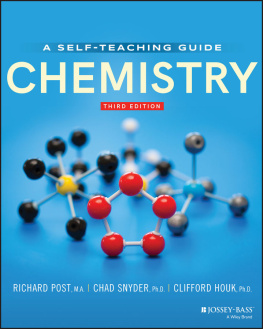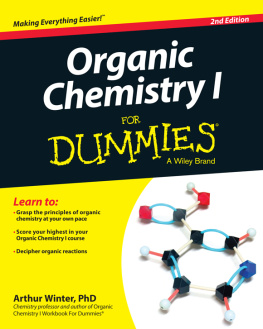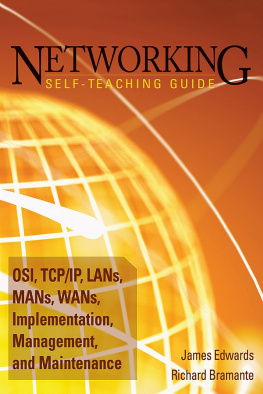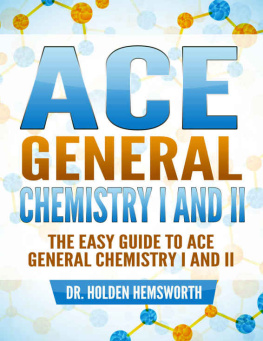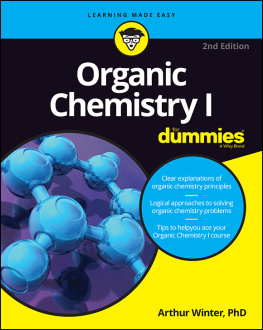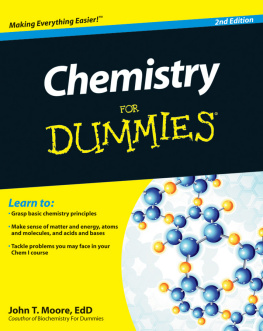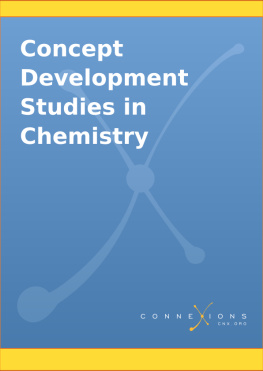Richard Post - Chemistry: A Self-Teaching Guide
Here you can read online Richard Post - Chemistry: A Self-Teaching Guide full text of the book (entire story) in english for free. Download pdf and epub, get meaning, cover and reviews about this ebook. year: 2020, genre: Children. Description of the work, (preface) as well as reviews are available. Best literature library LitArk.com created for fans of good reading and offers a wide selection of genres:
Romance novel
Science fiction
Adventure
Detective
Science
History
Home and family
Prose
Art
Politics
Computer
Non-fiction
Religion
Business
Children
Humor
Choose a favorite category and find really read worthwhile books. Enjoy immersion in the world of imagination, feel the emotions of the characters or learn something new for yourself, make an fascinating discovery.

- Book:Chemistry: A Self-Teaching Guide
- Author:
- Genre:
- Year:2020
- Rating:5 / 5
- Favourites:Add to favourites
- Your mark:
- 100
- 1
- 2
- 3
- 4
- 5
Chemistry: A Self-Teaching Guide: summary, description and annotation
We offer to read an annotation, description, summary or preface (depends on what the author of the book "Chemistry: A Self-Teaching Guide" wrote himself). If you haven't found the necessary information about the book — write in the comments, we will try to find it.
Richard Post: author's other books
Who wrote Chemistry: A Self-Teaching Guide? Find out the surname, the name of the author of the book and a list of all author's works by series.
Chemistry: A Self-Teaching Guide — read online for free the complete book (whole text) full work
Below is the text of the book, divided by pages. System saving the place of the last page read, allows you to conveniently read the book "Chemistry: A Self-Teaching Guide" online for free, without having to search again every time where you left off. Put a bookmark, and you can go to the page where you finished reading at any time.
Font size:
Interval:
Bookmark:
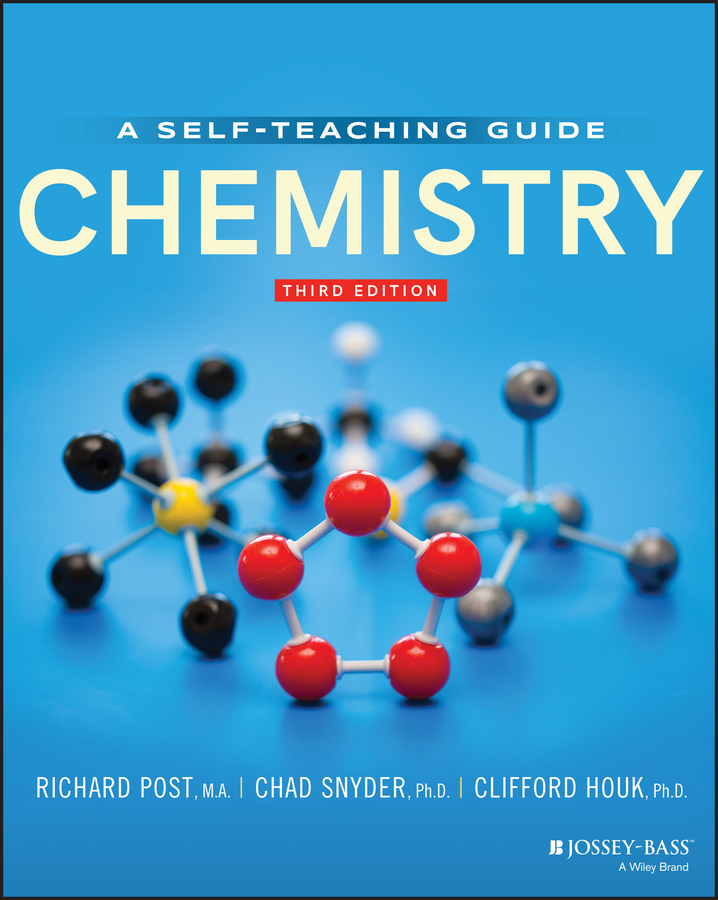
- Chapter 1
- Chapter 8
Wiley Self-Teaching Guides teach practical skills in mathematics and science. Look for them at your local bookstore.
Other Science and Math Wiley Self-Teaching Guides:
Science
Basic Physics: A Self-Teaching Guide, Third Edition by Karl F. Kuhn
Biology: A Self-Teaching Guide, Third Edition by Steven D. Garber
Math
All the Math You'll Ever Need: A Self-Teaching Guide by Steve Slavin
Practical Algebra: A Self-Teaching Guide, Second Edition by Peter H. Selby and Steve Slavin
Quick Algebra Review: A Self-Teaching Guide by Peter H. Selby and Steve Slavin
Quick Business Math: A Self-Teaching Guide by Steve Slavin
Quick Calculus: A Self-Teaching Guide, Second Edition by Daniel Kleppner and Norman Ramsey
Third Edition
Richard Post, M.A.
Assistant Dean Emeritus, Ohio University
Chad A. Snyder, Ph.D.
Professor of Chemistry, Liberty University
Clifford C. Houk, Ph.D.
Professor of Health Science Emeritus, Ohio University

Copyright 2020 by John Wiley & Sons, Inc.
Previous editions copyright 1977, 1996 by John Wiley & Sons, Inc.
All rights reserved. Published simultaneously in Canada.
Published by Jossey-Bass
A Wiley Brand
111 River St, Hoboken NJ 07030
www.josseybass.com
No part of this publication may be reproduced, stored in a retrieval system, or transmitted in any form or by any means, electronic, mechanical, photocopying, recording, scanning, or otherwise, except as permitted under Section 107 or 108 of the 1976 United States Copyright Act, without either the prior written permission of the publisher, or authorization through payment of the appropriate per-copy fee to the Copyright Clearance Center, Inc., 222 Rosewood Drive, Danvers, MA 01923, 978-750-8400, fax 978-646-8600, or on the Web at www.copyright.com. Requests to the publisher for permission should be addressed to the Permissions Department, John Wiley & Sons, Inc., 111 River Street, Hoboken, NJ 07030, 201-748-6011, fax 201-748-6008, or online at www.wiley.com/go/permissions.
Limit of Liability/Disclaimer of Warranty: While the publisher and author have used their best efforts in preparing this book, they make no representations or warranties with respect to the accuracy or completeness of the contents of this book and specifically disclaim any implied warranties of merchantability or fitness for a particular purpose. No warranty may be created or extended by sales representatives or written sales materials. The advice and strategies contained herein may not be suitable for your situation. You should consult with a professional where appropriate. Neither the publisher nor author shall be liable for any loss of profit or any other commercial damages, including but not limited to special, incidental, consequential, or other damages.
Jossey-Bass books and products are available through most bookstores. To contact Jossey-Bass directly call our Customer Care Department within the U.S. at 800-956-7739, outside the U.S. at 317-572-3986, or fax 317-572-4002.
Wiley also publishes its books in a variety of electronic formats and by print-on-demand. Some material included with standard print versions of this book may not be included in e-books or in print-on-demand. For more information about Wiley products, visit www.wiley.com.
Library of Congress Cataloging-in-Publication Data
ISBNs: 978-1-119-63256-6 (paperback), 978-1-119-63265-8 (ePDF), 978-1-119-63262-7 (ePub)
Cover Design: Wiley
Cover Image: science photo/Shutterstock
THIRD EDITION
In our years of teaching the fundamental concepts of chemistry to students with widely divergent backgrounds, levels of preparation, career goals, and motivation, the most frequently asked question by those students has been, Do you have something that I can study on my own? followed immediately by, I need some other review material or This is the first time I have encountered this stuff, so I need to start from scratch or It has been 3years since my high school chemistry course. I need something to refresh my memory.
This book has been written to meet such needs. It can stand alone as a first look at chemistry or may be used as a supplement to any of the many excellent textbooks or methods of instruction currently in use. The material presumes no previous exposure to chemistry and requires only simple algebra.
There are no secrets. Each chapter includes an introductory statement, a list of objectives, and the main teaching section, which consists of frames of tutorial material with constant practice exercises. Each chapter closes with a self-test. You can use this self-test to assess whether you have mastered the chapter well enough to continue and to identify weaknesses that require additional study. Finally, some chapters include an end-of-chapter or transitional story connecting the material to a relevant topic in chemistry.
The topics presented are usually covered early in a general introductory course. The third edition also contains a new chapter on organic chemistry consistent with the material found in general chemistry textbooks. We have minimized heavy theoretical discussions, while emphasizing descriptive and practical concepts. There is enough theoretical explanation to provide a basis for understanding the material but not so much that you will get bogged down trying to work through the book.
Chemistry: A Self Teaching Guide is unlike the ordinary textbook. It is designed to be completely self-instructional, requiring no chemistry background. The previous editions have been thoroughly tested as a successful means for self-instruction in chemistry for thousands of students. The book can also be used as a supplementary text for any general chemistry course. Each chapter is divided into objectives, an interactive tutorial study section, a self-test, and test answers.
- Objectives. By examining the chapter objectives, you can determine what information is contained in each chapter. If you already know the material, take the self-test at the end of the chapter. Review those questions you missed by checking the frame references given with the answer to each question.
- Tutorial study frames. The body of each chapter is divided into numbered frames. Each frame contains new information, a problem, or an example of a concept with one or more questions for you to answer. Answers for the questions in each frame are given immediately below the questions. Years of educational research have proven this method of immediate reinforcement with the correct answer to be the most effective and efficient means of learning for self-instruction. While having the answer just below each question assures immediate feedback to reinforce learning, it also requires discipline on your part to think about the answer before viewing. We suggest using a bookmark such as an index card as you go down each page, covering the answer below while you critically think about the answer or solve a problem. Each question and answer frame is crafted as a small step, like each step on a staircase, designed to lead to a fuller understanding of a concept in chemistry.
Font size:
Interval:
Bookmark:
Similar books «Chemistry: A Self-Teaching Guide»
Look at similar books to Chemistry: A Self-Teaching Guide. We have selected literature similar in name and meaning in the hope of providing readers with more options to find new, interesting, not yet read works.
Discussion, reviews of the book Chemistry: A Self-Teaching Guide and just readers' own opinions. Leave your comments, write what you think about the work, its meaning or the main characters. Specify what exactly you liked and what you didn't like, and why you think so.

